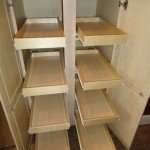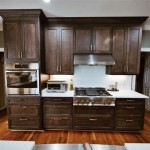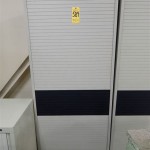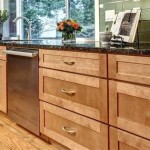Building File Cabinet Drawers: A Comprehensive Guide
File cabinets are essential for organizing and storing important documents. Whether you are setting up a new office or upgrading your existing storage solutions, building your own file cabinet drawers can be a rewarding and cost-effective approach. This guide provides a detailed explanation of the process, covering everything from materials selection to assembly techniques.
Choosing the Right Materials
The first step in building file cabinet drawers is selecting the appropriate materials. The type of material you choose will determine the durability, aesthetic appeal, and overall cost of your project. Here are some common options:
- Plywood: A versatile and affordable option, plywood offers good stability and can be easily cut and shaped.
- Medium-density fiberboard (MDF): A dense and smooth material, MDF is relatively inexpensive and provides a consistent surface for finishing.
- Hardwood: For a more premium look and feel, hardwoods like oak, maple, or cherry offer durability and natural beauty.
Consider the intended use of the drawers, the weight they need to support, and the overall style you are aiming for when making your selection. For example, plywood is suitable for general office use, while hardwood is ideal for heavy-duty applications or a more sophisticated aesthetic.
Designing and Cutting the Components
Once you have chosen your materials, you need to design and cut the drawer components. This involves determining the dimensions of the drawer box, the drawer front, and any necessary dividers or supports. Consider the following factors:
- Standard file sizes: Ensure your drawers can accommodate standard file sizes to ensure compatibility with existing files and folders.
- Drawer depth: Choose a depth that provides ample space for the files and allows for easy access.
- Drawer clearance: Leave sufficient clearance around the drawer slides to prevent binding or obstruction.
Use accurate measurements and a saw, such as a circular saw or table saw, to cut the components to the required dimensions. Pay attention to precise cuts for smooth operation and a professional finish.
Assembling the Drawer Box
The next step is to assemble the drawer box. This typically involves joining the sides, front, and back panels using wood glue, screws, and/or dowels. Here are some common assembly techniques:
- Pocket-hole joinery: This method utilizes pre-drilled pocket holes for concealed screw attachment.
- Rabbet joint: A rabbet joint creates a strong and secure connection by fitting a groove in one piece into a corresponding lip on another.
- Dado joint: A dado joint involves creating a groove in one piece to accommodate the thickness of another piece, providing a robust and flush connection.
Select the most suitable method based on your skills, tools, and the desired level of precision. Ensure that all joints are tight and secure for optimal durability.
Installing Drawer Slides
Drawer slides are essential for smooth and effortless drawer operation. There are various types available, including side-mount, bottom-mount, and full-extension slides. Choose the type that best suits your needs and the design of your file cabinet.
Follow the manufacturer's instructions carefully when installing the slides. Typically, you will need to attach the slides to the sides of the drawer box and the corresponding cabinet rails. Ensure that the slides are level and properly aligned for smooth drawer operation.
Finishing the Drawers
Once the drawer box is assembled and the slides are installed, you can finish the drawers to your desired aesthetic. This may involve sanding, priming, painting, or staining.
Sanding helps to create a smooth surface for painting or staining. Priming provides a base coat for the finish coat. Painting offers a wide range of colors and finishes, while staining enhances the natural grain of the wood.
Choose the finishing method that best complements your file cabinet and overall office design. Ensure that the finish is durable and resistant to scratches and stains for long-lasting protection.
Additional Considerations
Here are some additional considerations when building file cabinet drawers:
- Drawer stops: Install drawer stops to prevent the drawers from being pulled out too far and causing damage.
- Drawer labels: Use drawer labels to clearly identify the contents of each drawer, making it easier to find what you need.
- Safety precautions: Always use safety glasses and ear protection when working with power tools. Pay attention to proper lifting techniques to avoid injuries.
By carefully planning and following these steps, you can successfully build file cabinet drawers that are both functional and aesthetically pleasing. Remember to prioritize accuracy, precision, and safety throughout the construction process.

How To Build Diy Built In Cabinets With Drawers

How To Build An Easy File Cabinet Using Plywood And 2x4s

Lateral File Cabinet Woodworking Project Woodsmith Plans

Diy File Cabinet Woodworking Plans To Build A Wooden Filing

Drawer Cabinet Office Build Plans

How To Build Diy Built In Cabinets With Drawers

How To Build A Hanging File Folder Drawer Sawdust Girl

Modular File Cabinets Woodworking Project Woodsmith Plans

How To Build A Hanging File Folder Drawer Sawdust Girl

Diy File Cabinet Woodworking Plans To Build A Wooden Filing
Related Posts








